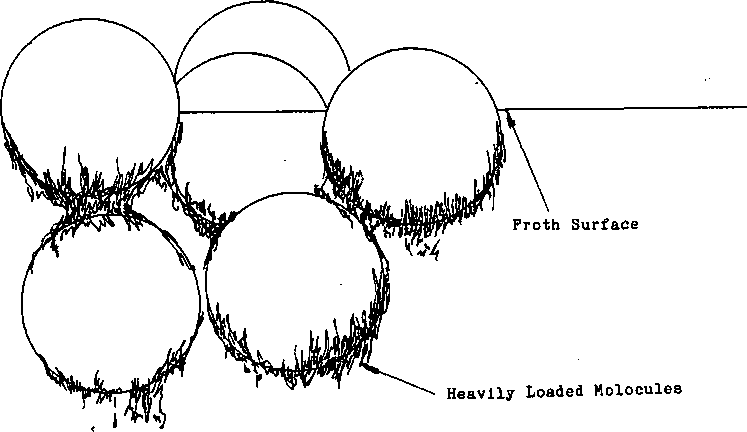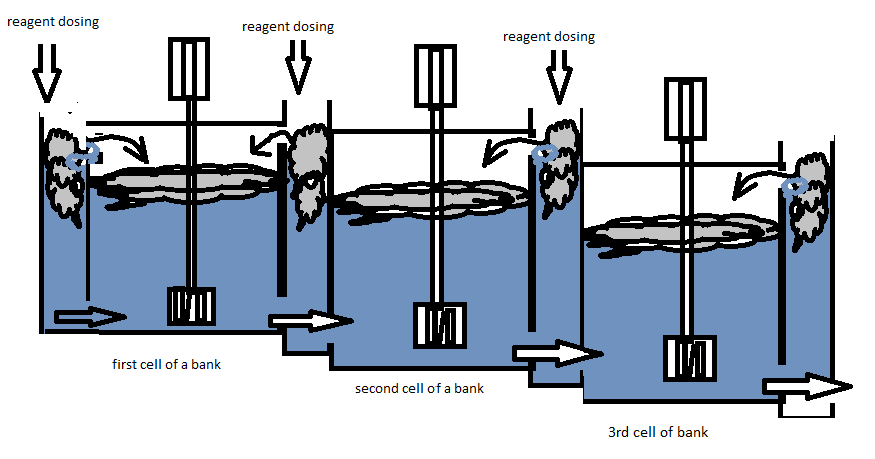What happens when there is too much flotation collector, how do you know and how can to estimate? The bubble will react as if there is too little depressant. Froth bubbles will get smaller and closer together, but the unlike the depressant it won’t cause the mineral to fall off of the bubble due to overloading. Remember there is enough depressant to keep the majority of unwanted mineral from floating, but the extra surface area of the collector allows a better contact between the chalcopyrite and the collector molecule.
|
|
 |
This will cause the particles with small portions of mineral exposed to be able to be collected.
Add enough collector and you will float the Titanic back to surface. High dosage of collector can undo any careful use of depressant you had used.
The extra surface area also means a better contact being made between the collector and the air. This makes a more stable surface. But because the majority of the new material, that is collected, will be mineral that is joined with the native rock or what is known as the gangue mineral/material. The colour will be dirty looking with a touch more unwanted mineral colour. Consider stage collector addition to help control dosage.
 Again the operator watches for a smaller bubble but usually it is a stable bubble, with a dirty colour.
Again the operator watches for a smaller bubble but usually it is a stable bubble, with a dirty colour.
If there is NOT ENOUGH COLLECTOR the reaction is a little trickier, as it is the collector molecule that is in short supply the mineral will heavily overload the molecule. There is enough surface area on the bubble for the mineral but there isn’t enough to weight the bubble down. As the bubble expands the weight of the mineral slides it around the bubble surface until the weight is on the bottom of the bubble.
This happens because there aren’t enough collector molecules on the surface of the bubble to give each particle support and prevent it from sliding. As it comes into contact with the bubble below it, the molecule will transfer itself to that bubble and the weight of the mineral continues to pull it downwards. This will continue until the bubble has enough mineral on it to completely cover its surface. Up until this point the flotation cell will have been running slowly. As the froth becomes loaded it will begin to float properly until the froth load has floated off. Then it will slow down again until the bubbles have had a chance to load themselves once more.
The indicators that show that this is happening is an unsteady speed of the cell overflow, the size of the bubbles becoming large and unstable, slowly getting smaller until the speed of the cell increases and the cell unloads. The colour will remain normal.
Always be running reagents (collectors) in starvation mode, i.e.: on the verge of not having enough on.
https://www.911metallurgist.com/optimum-flotation-reagent-addition-rate-dosage


